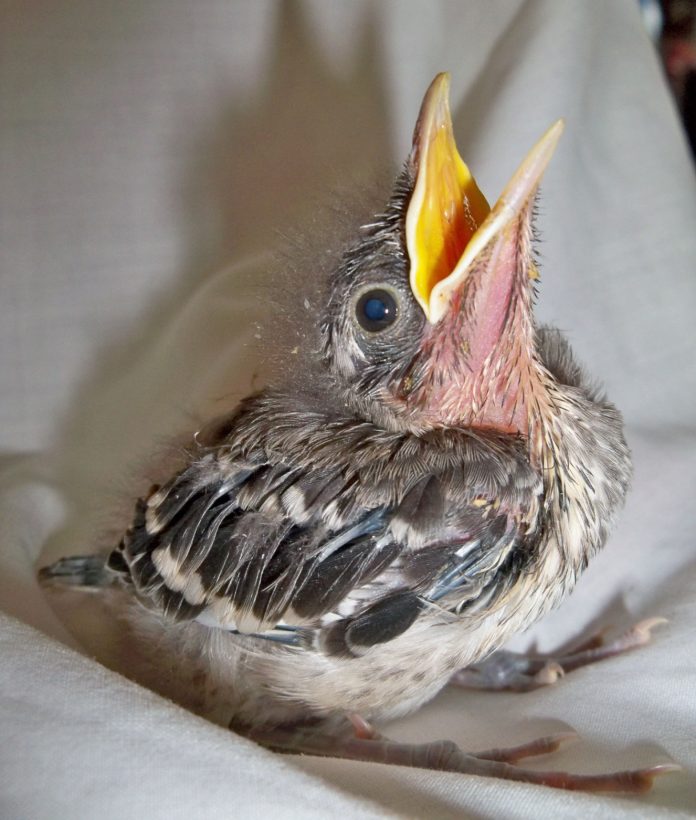We’re having a baby boom at the Wildlife Education and Rehabilitation Center.
In just one month, we’ve admitted a virtual flock of baby hummingbirds, owls, finches, doves, crows, mockingbirds, jays, juncos, robins, one plump band-tailed pigeon and …for a change of pace in the avian list…five tiny opossums. Most of the babies have been orphaned or fell out of nests (and were unable to be returned,) but a few others were “kidnapped” by cats. These babies are keeping staff and volunteers busy day and night, feeding some of them as often as every 15 minutes.
This time of year is “baby season.” You’re hearing cheeping and chirping in the trees and seeing lots of avian activity as parent birds fly back and forth searching for food and feeding their nestlings. It’s also a time when people are outside enjoying the pleasant weather and finding little critters (birds and mammals) that may appear to be in need of help. Most people call WERC or other licensed rehabilitation facility to ask for advice on what to do. Advice can vary from “leave it alone” when it’s a fledgling still being cared for by its parents to “bring it in” when it’s injured or obviously orphaned. A young animal’s best chance for survival is to be raised by its natural parents. It’s important to make every effort to return the young to its family. Only after all efforts to reunite them have been exhausted should the orphan be removed from the wild and taken to a licensed wildlife center.
One of the biggest advisements is “do not feed the babies yourself.” Proper care and nutrition are crucial to the survival of the baby and a nutritional deficiency can occur within a few days and cost the animal its life. Each animal species and age has its own dietary requirements and an inappropriate diet can kill the animal. Store-bought food formulated for pet birds is not appropriate for wildlife. Besides being illegal for the public to care for native species, licensed rehabilitators are experts in determining the proper nutrients for each species: Insectivores (robins, swallows,) omnivores (crows, jays, opossums,) herbivore and seed-eaters (pigeons, doves,) fish-and-frog-eaters (herons, terns,) carnivorous raptors (owls, hawks, falcons) that eat rodents and other natural “meat” (but not hamburger,) and those birds that eat a variety of fruit, seed and insects (mockingbirds, finches.)
Food that rehabilitators feed to the wild babies can range from special protein formulas for nestlings








